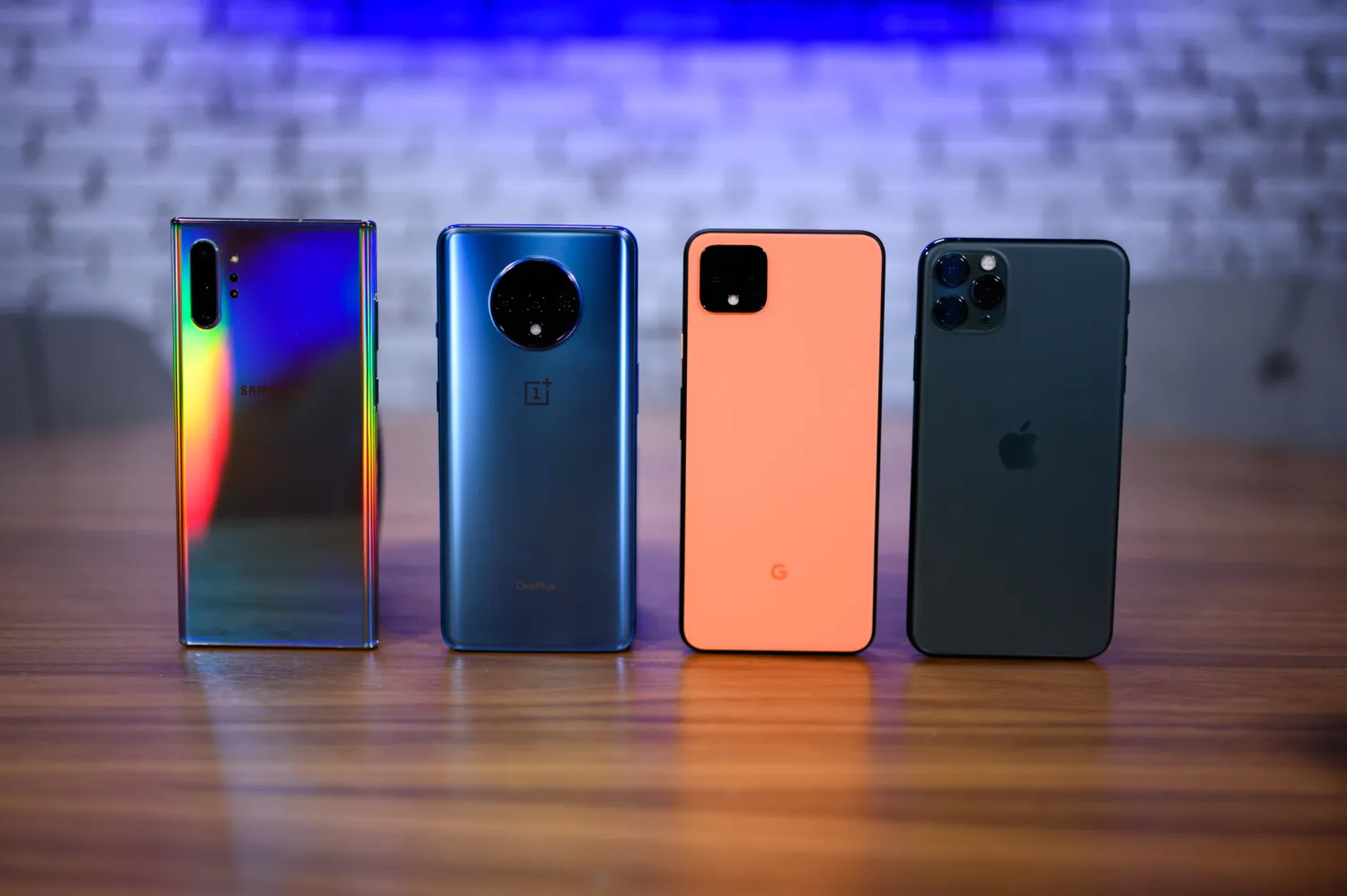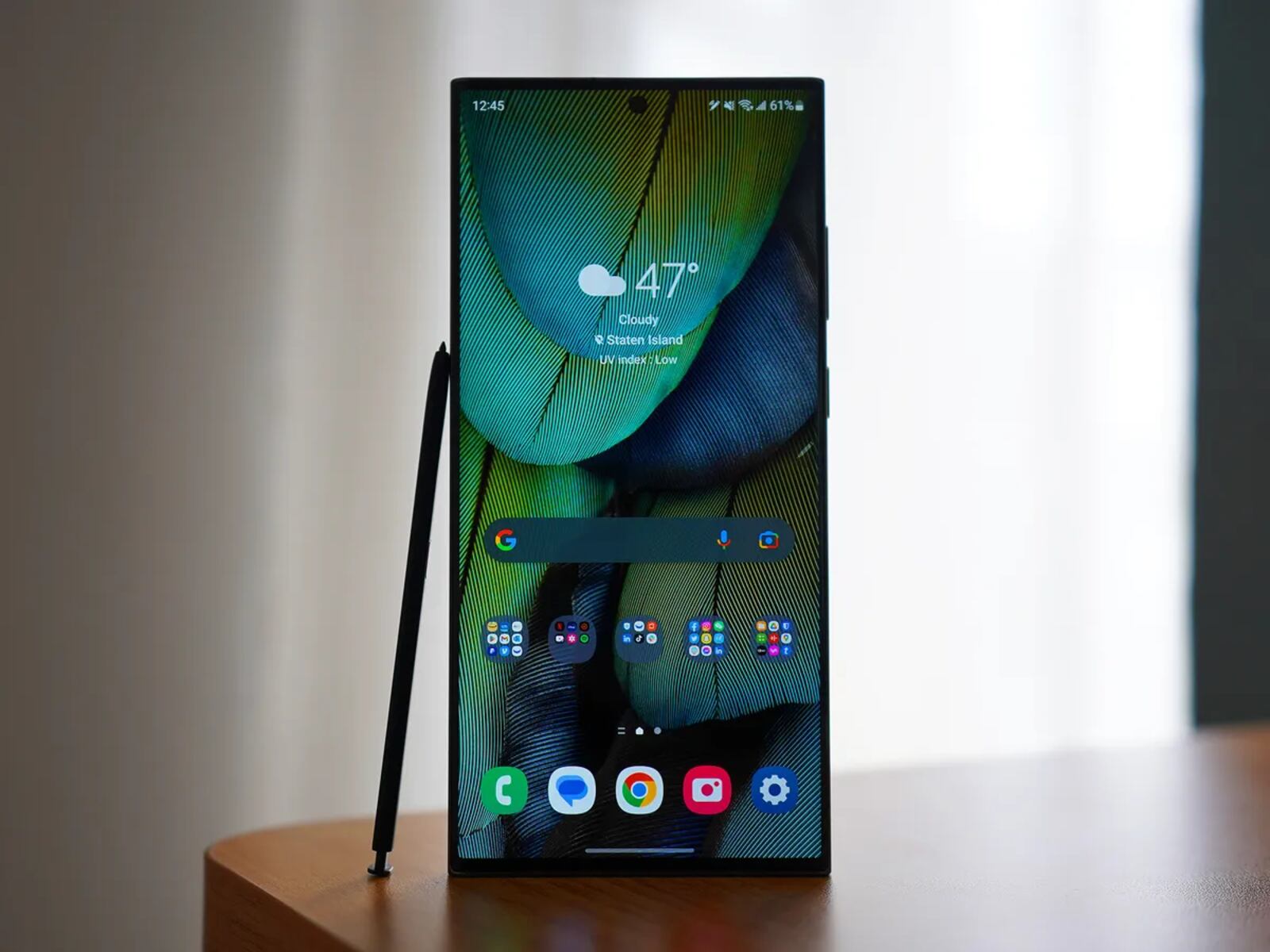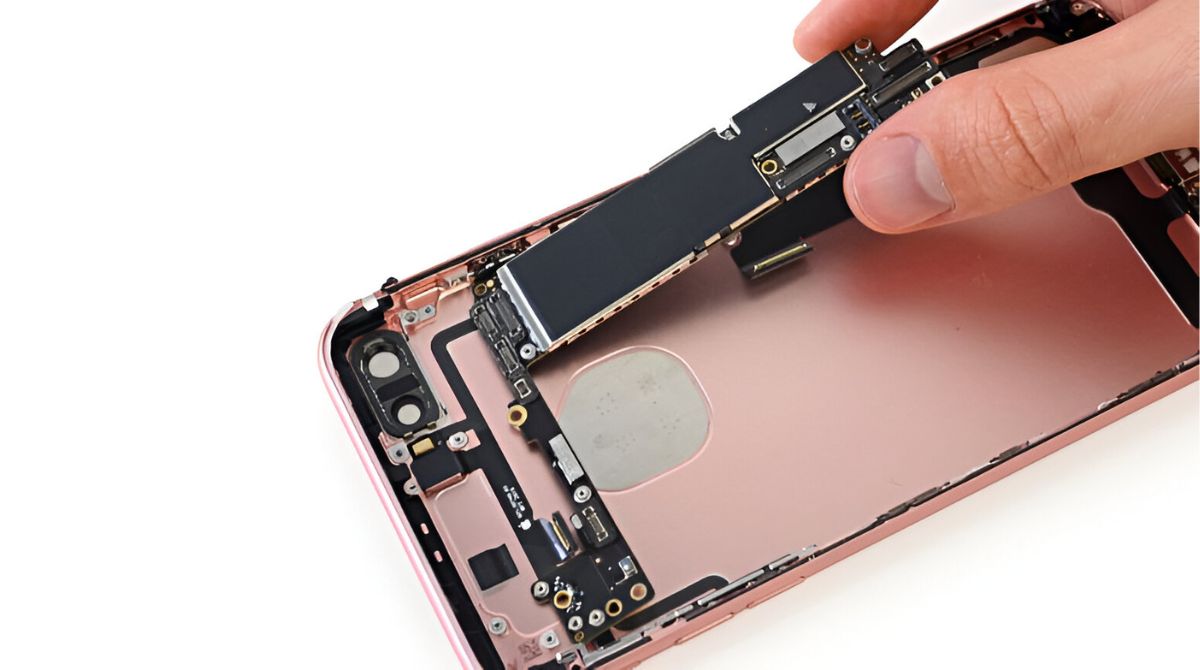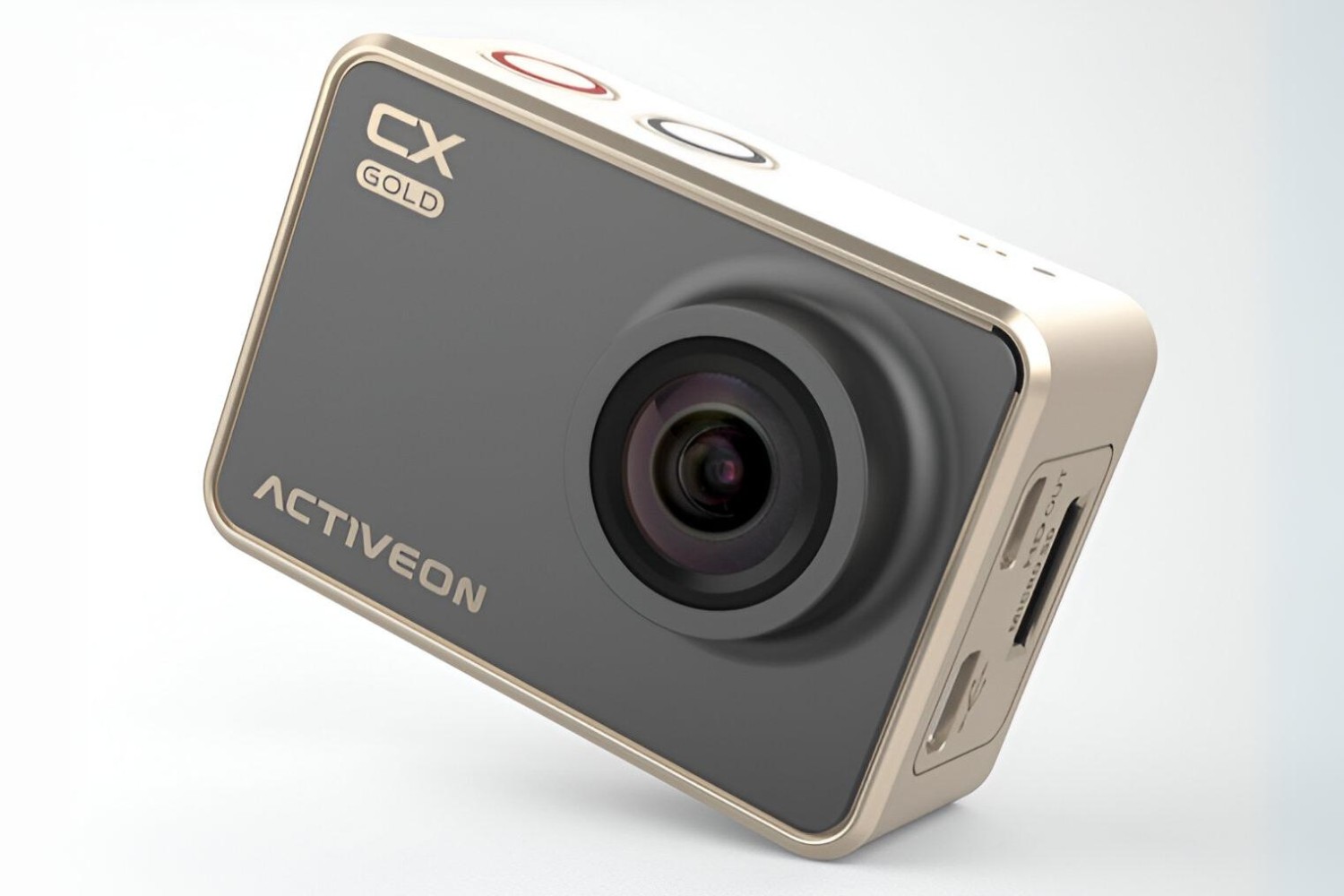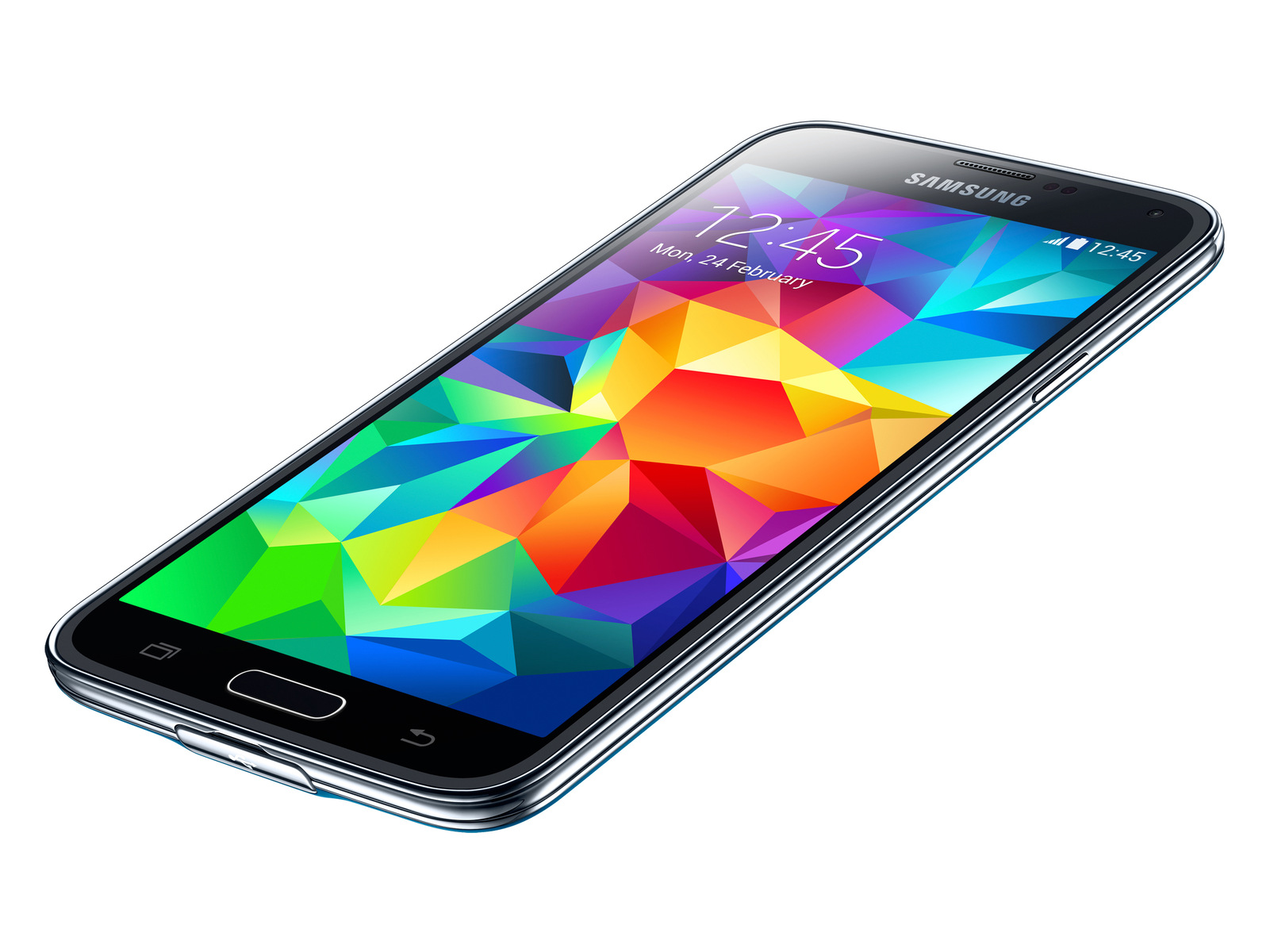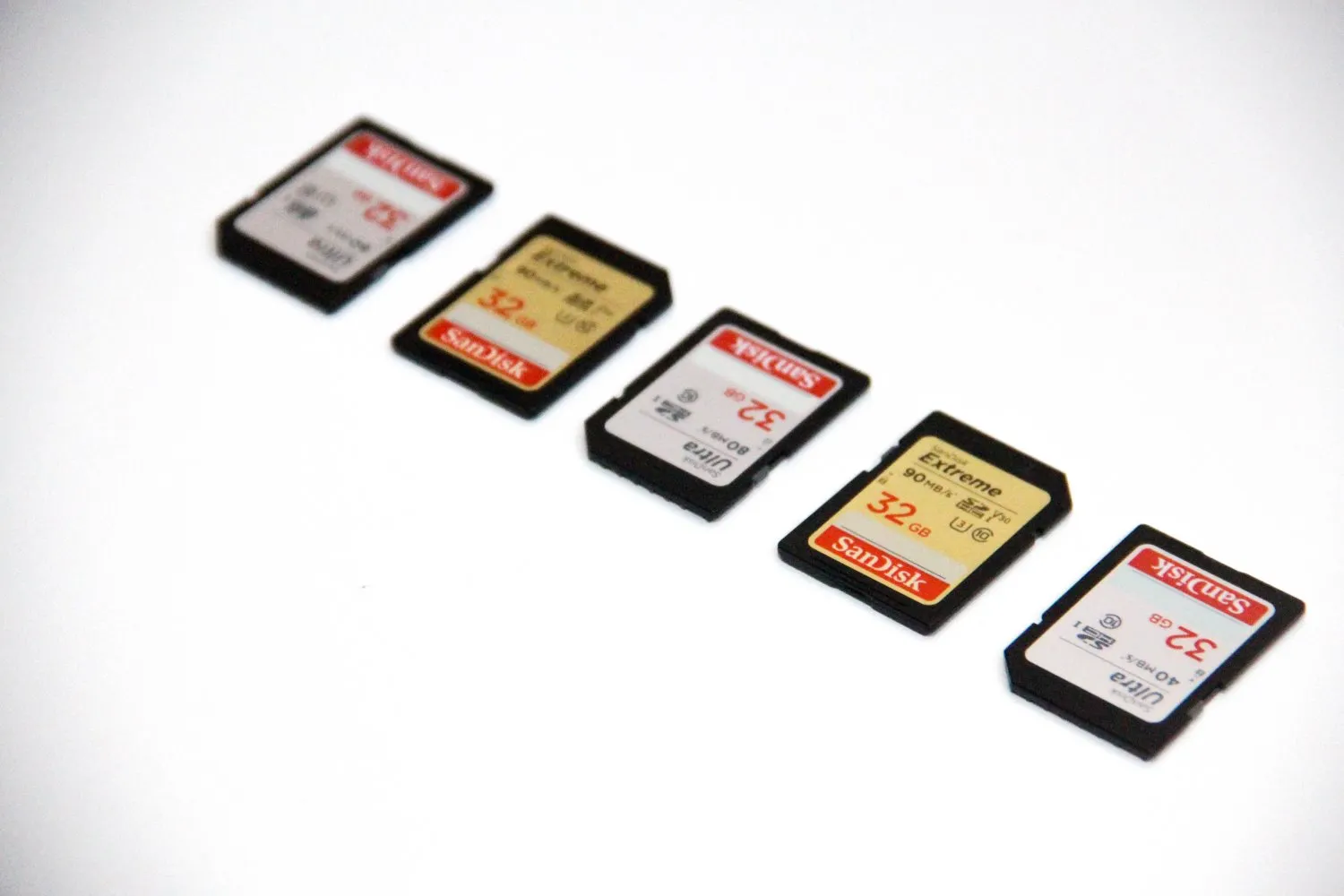Introduction
Selecting the right amount of storage for your smartphone is a crucial decision that can greatly impact your user experience. With the increasing reliance on smartphones for various tasks, including storing photos, videos, apps, and documents, it’s essential to understand how much storage you actually need. Having inadequate storage can limit your device’s capabilities and force you to constantly delete files to free up space. On the other hand, having excessive storage may be an unnecessary expense.
When determining the ideal storage capacity for your smartphone, it’s important to consider several factors. These factors include the types of files you intend to store, your usage patterns, the operating system and apps you use, cloud storage options, and your future needs and device longevity. By taking these factors into account, you can make an informed decision that aligns with your requirements and budget.
In this article, we will explore these factors in detail and provide insights into the different storage options available on the market. Understanding these considerations will empower you to choose the right storage capacity, ensuring that you have sufficient space for your current and future needs without unnecessary expenses.
Factors to Consider
When deciding how much storage you need on your smartphone, there are several important factors to consider. By evaluating these factors, you can make an informed decision that suits your individual needs and preferences. Let’s take a closer look at each of these factors:
- Types of Files: Consider the types of files you typically store on your smartphone. If you primarily use your device to capture high-resolution photos and videos, you’ll require more storage compared to someone who mainly uses their smartphone for browsing and basic apps.
- Usage Patterns: Analyze how you use your smartphone on a daily basis. Are you a heavy user who frequently downloads large apps, games, and media files? Or do you rely more on cloud storage services and stream content online? Understanding your usage patterns will help determine how much storage you need.
- Operating System and Apps: Different operating systems and apps may require varying amounts of storage space. iOS, for example, tends to use less storage compared to Android due to its efficient file compression. Additionally, certain apps, such as video editing or gaming apps, may take up a significant amount of space.
- Cloud Storage Options: Consider utilizing cloud storage options to offload some of your files from your smartphone. Services like Google Drive, Dropbox, or iCloud offer free or paid options that allow you to store your files online, freeing up space on your device.
- Future Needs and Longevity: Anticipate your future needs and how long you plan to keep your smartphone. As technology advances and file sizes increase, it’s important to consider your device’s longevity and whether it can accommodate your storage needs in the years to come.
By carefully considering these factors, you can determine the optimal storage capacity for your smartphone. This will ensure that you have enough space for your files while also avoiding unnecessary expenses for excessive storage that you may not fully utilize.
Types of Files
When deciding how much storage you need on your smartphone, one of the key considerations is the types of files you typically store. Different file types have varying sizes, and understanding your file storage needs will help you determine the appropriate amount of storage capacity.
Let’s break down some common types of files and their average sizes:
- Photos: High-resolution photos captured on modern smartphones can range from 2 MB to 10 MB per photo. If you enjoy photography and frequently capture images, you’ll need ample storage space to accommodate a large photo library.
- Videos: Videos can take up a significant amount of storage space, especially if you record in high-definition or 4K resolution. Recording a minute of HD video can consume around 60 MB of storage, while a minute of 4K video can require approximately 350 MB. If you frequently record videos, consider opting for a higher storage capacity.
- Apps: Apps can vary greatly in size, ranging from a few megabytes to several gigabytes. Games, in particular, tend to be larger in size due to their complex graphics and gameplay. If you enjoy playing games or use specific resource-intensive apps, you’ll need more storage to accommodate them.
- Documents and Files: Text documents, PDFs, spreadsheets, and other similar files usually have smaller file sizes. However, if you frequently work with large files, such as multimedia presentations or professional documents, you should consider the additional storage required.
- Music: The size of music files depends on the audio quality and file format. A typical 3-minute song in mp3 format is around 3-5 MB. If you have a large music library, it’s important to factor in the storage space needed for your favorite tunes.
By evaluating the types of files you frequently store on your smartphone and estimating their sizes, you can gain a clearer understanding of the storage capacity required. This will help you avoid running out of space and ensure that you can enjoy your multimedia content and apps without any constraints.
Usage Patterns
Understanding your usage patterns is an essential factor when determining the ideal storage capacity for your smartphone. Your usage patterns indicate how you utilize your device on a daily basis and the amount of storage space you may require. Let’s explore some common usage patterns to help you make a more informed decision.
- Media Consumption: If you frequently download or stream high-definition movies, TV shows, and music, you’ll need more storage to store your media files offline. Streaming services like Netflix and Spotify offer the convenience of online streaming, which reduces the need for local storage.
- App Usage: Consider the number and size of apps you regularly use. Social media apps, gaming apps, and productivity apps can vary in size significantly. Analyzing your app usage will help you gauge the space needed to accommodate them.
- Photography and Videography: If you’re an avid photographer or videographer, your storage requirements will increase due to the large file sizes of high-quality photos and videos. Regularly capturing and storing these media files can quickly fill up your available storage space.
- Downloading and Saving Files: If you frequently download files, such as documents, presentations, or multimedia content from the web, you’ll need additional storage to store these files. This is especially true if you rely on your smartphone for work or educational purposes.
- Cloud Storage Usage: Some users heavily rely on cloud storage services like Google Drive, iCloud, or Dropbox to store their files. By utilizing cloud storage, you can reduce the dependency on local storage on your smartphone. Consider your cloud storage usage when determining your device’s storage needs.
By evaluating your usage patterns and considering the types of activities you engage in on your smartphone, you can estimate the amount of storage space required. This will ensure that you have enough storage to comfortably handle your daily tasks without constantly worrying about running out of space.
Operating System and Apps
The operating system and apps you use on your smartphone play a significant role in determining the amount of storage space required. Different operating systems and apps have varying storage footprint and efficiency. Let’s delve into this factor in more detail to help you evaluate your storage needs accurately.
1. Operating System: The operating system itself occupies a portion of the device’s storage. iOS and Android, the two most popular mobile operating systems, have different storage requirements. iOS is known for its efficient file compression, resulting in smaller installation sizes and reduced storage usage. On the other hand, Android operates with more flexibility and customization, but certain versions may require more storage due to their larger file sizes.
2. Pre-installed Apps: Most smartphones come with pre-installed apps from the manufacturer or carrier. These apps, such as calendar, calculator, or email clients, take up storage space. While these apps are generally small, it’s important to account for their storage usage when considering your overall needs.
3. User-installed Apps: The apps you install from app stores can have a significant impact on your device’s storage space. Some apps, particularly popular social media apps, tend to accumulate cache and temporary files that gradually occupy more storage over time. Additionally, resource-intensive apps like video editing or gaming apps may require a considerable amount of space for installation and data storage.
4. App Updates: App updates can also consume additional storage space. As developers release new versions of apps with bug fixes, new features, or security updates, these updates are downloaded and stored on your device. Over time, these updates can contribute to the overall storage usage.
Understanding the storage requirements of your operating system and the apps you use is crucial in determining the ideal storage capacity for your smartphone. By considering the storage footprint of your chosen operating system and the apps you plan to install, you can make an informed decision and allocate sufficient space for a smooth user experience.
Cloud Storage Options
In addition to the built-in storage capacity of your smartphone, you can also leverage cloud storage services to expand your storage options. Cloud storage allows you to store files remotely on servers accessed through the internet, reducing the reliance on local storage on your device. Let’s explore the benefits and considerations of using cloud storage to meet your storage needs.
1. Free and Paid Options: Many cloud storage providers offer free plans with limited storage space, typically ranging from a few gigabytes to a few dozen gigabytes. These free options can be suitable for storing important documents, photos, or files you don’t need constant access to. For users with larger storage requirements, paid plans offer significantly more storage space at a monthly or yearly cost.
2. Accessibility: Cloud storage allows you to access your files from multiple devices, such as smartphones, tablets, and computers. This provides you with the flexibility to access and manage your files on the go, even if you have limited storage capacity on your smartphone.
3. Easy File Management: Cloud storage services often include features for easy file management, including organizing files into folders, sharing files with others, and automatically syncing files across devices. These features make it convenient to manage and manipulate your files without taking up local storage space.
4. Security and Privacy: When using cloud storage, it’s important to consider the security and privacy of your files. Ensure that the chosen cloud storage provider has robust security measures in place, such as encryption and secure access protocols, to protect your data from unauthorized access.
5. Internet Connection: Keep in mind that accessing files stored in the cloud requires an internet connection. If you’re in an area with limited or unreliable internet connectivity, accessing your files may become challenging. However, some cloud storage services offer offline access, allowing you to download files for offline use on your smartphone.
By utilizing cloud storage options, you can offload some of your files from your smartphone’s local storage, freeing up valuable space. Consider your storage needs, internet connectivity, and desired features when choosing a cloud storage provider to complement your device’s storage capacity.
Future Needs and Longevity
When determining the appropriate storage capacity for your smartphone, it’s essential to consider your future needs and the longevity of your device. As technology advances and file sizes increase, it’s crucial to anticipate your future storage requirements to avoid outgrowing your smartphone’s storage capacity too quickly. Let’s explore this factor in more detail.
1. Technological Advancements: Over time, file sizes tend to increase as media quality improves and software becomes more feature-rich. High-definition photos and videos, 4K content, and resource-intensive apps can all contribute to larger file sizes. Considering the direction of technological advancements and the types of files you anticipate using in the coming years will help you estimate your future storage needs.
2. Device Longevity: How long do you plan to keep your smartphone? If you intend to use your device for a few years, it’s important to consider how storage needs may change during that time. As you accumulate more files and apps over the lifespan of your device, having ample storage can help prevent the need for frequent file management or having to upgrade earlier than desired.
3. Expandable Storage Options: Some smartphones offer expandable storage options, typically via microSD cards. This allows you to add additional storage capacity to your device as needed. If expandable storage is an option for your smartphone, you can consider a lower internal storage capacity and rely on external storage for future needs.
4. Resale Value: Keep in mind that devices with larger storage capacities tend to have higher resale values. If you anticipate upgrading to a new smartphone in the future, opting for a higher storage capacity can help ensure a better resale value, should you choose to sell or trade in your device.
By carefully considering your future needs and the anticipated longevity of your smartphone, you can make an informed decision about the storage capacity required. Leaving room for future growth and technological advancements will help ensure that your device remains capable and functional for years to come.
Smartphone Storage Options
When it comes to smartphone storage options, there are a variety of capacities available to suit different user needs. It’s important to understand the different storage options and their advantages and limitations. Let’s explore the common storage capacities found in smartphones and their suitability for various usage scenarios.
- 16 GB: This is the lower end of the storage spectrum and is typically found in budget or entry-level smartphones. While 16 GB may be sufficient for users who primarily use their smartphones for basic tasks like calling, messaging, and light app usage, it can quickly become inadequate for those who store a significant amount of media files, apps, and documents.
- 32 GB: Considered the minimum standard for most mid-range smartphones, 32 GB offers more storage space than 16 GB but may still pose limitations for heavy media users. It provides enough room for a moderate collection of apps, photos, videos, and files. However, users who enjoy capturing high-resolution videos or maintaining a large media library may find 32 GB to be restrictive in the long run.
- 64 GB: This capacity strikes a balance between affordability and storage space, making it a popular choice for many smartphone users. With 64 GB, you have more freedom to store a substantial number of apps, photos, videos, and files. It’s suitable for individuals who engage in casual media consumption and have a moderate number of apps installed.
- 128 GB: With 128 GB, you have ample storage space to store a significant number of apps, games, high-resolution photos, videos, and large files. This option is ideal for users who regularly capture videos or photos in high quality, have an extensive collection of media files, or require additional storage for work-related documents and presentations.
- 256 GB: This higher capacity is well-suited for power users who engage in media-heavy activities, such as professional photographers, videographers, or individuals who store a large amount of high-definition videos and games. 256 GB provides an ample amount of space for both personal and professional needs, ensuring that you can store a vast amount of data without worrying about running out of space.
- 512 GB: Typically found in flagship smartphones, 512 GB offers an enormous amount of storage space. This option is suitable for users who require extensive storage for their multimedia content, including 4K videos, RAW photos, and large collections of high-end games. It also offers excellent flexibility for users who prefer to avoid relying heavily on cloud storage.
- 1 TB and Beyond: Currently, smartphones offering 1 TB of storage or more are considered exceptional and are typically found in premium models. These devices cater to professionals with demanding storage needs, such as content creators or individuals who regularly work with large files. With such a massive storage capacity, you can store a vast library of media files, including 8K videos and extensive collections of RAW photos.
When choosing a smartphone with the right storage option, it’s crucial to consider your usage patterns, the types of files you regularly store, and your future needs. Opting for a larger storage capacity ensures that you have ample space to accommodate your files and allows for future growth without the constant need for file management or reliance on external storage options. Ultimately, the choice of storage capacity depends on your individual requirements and budget constraints.
16 GB
16 GB is commonly found in budget or entry-level smartphones, offering a basic storage capacity for essential tasks. While it may seem sufficient for users with minimal storage needs, there are important considerations to keep in mind before choosing this option.
With 16 GB of storage, you can store a limited number of apps, photos, videos, and files. It suits individuals who primarily use their smartphones for basic functions like making calls, sending messages, and light app usage. However, it’s important to note that 16 GB can quickly become restrictive if you engage in activities that consume storage space, such as capturing high-resolution photos or downloading multimedia-heavy apps.
One of the main challenges with 16 GB is the limited space for apps. Modern applications continue to increase in size due to new features and improved graphics. When combined with the pre-installed apps and system files, the available storage can diminish rapidly, leaving little room for user-installed apps and files.
Moreover, multimedia enthusiasts who enjoy capturing photos and videos may find 16 GB insufficient for their needs. High-resolution photos and high-definition videos take up a significant amount of space, and a limited storage capacity can lead to frequent deletion of files or the need to rely heavily on cloud storage options.
If you choose a 16 GB smartphone, it is essential to practice efficient storage management. Regularly clearing unnecessary files, transferring media to cloud storage, and limiting the installation of large apps can help optimize the available space. Additionally, utilizing external storage options like microSD cards or cloud storage services can provide additional space for files and media.
It’s worth noting that certain operating systems and pre-installed apps also consume a portion of the available storage. Therefore, the actual usable space may be slightly less than the advertised 16 GB.
In summary, 16 GB is suitable for users who have minimal storage requirements and primarily use their smartphones for basic tasks. However, if you engage in activities that consume storage space or anticipate needing more storage in the future, it’s advisable to consider smartphones with higher storage capacities to ensure a smoother and more accommodating user experience.
32 GB
With 32 GB of storage, smartphones offer a slight upgrade from the basic 16 GB option found in budget devices. This capacity is often considered the minimum standard for many mid-range smartphones. While it provides more storage space compared to 16 GB, there are still limitations to consider before selecting this option.
32 GB provides a reasonable amount of space for storing apps, photos, videos, and files. It is suitable for users who engage in casual smartphone usage, including social media browsing, light gaming, and basic app usage. However, if you heavily rely on your smartphone for media consumption or utilize resource-intensive apps, 32 GB may start to feel restrictive over time.
One key consideration with 32 GB is the availability of storage for user-installed apps. As app sizes continue to increase, especially with larger game files and media-rich applications, the space required for these apps can quickly diminish the available storage. It’s essential to carefully manage the installation of apps and regularly clear unnecessary files to optimize the storage capacity.
For multimedia enthusiasts who enjoy capturing high-resolution photos and videos, 32 GB may present some limitations. The storage space can fill up relatively quickly, particularly when recording videos in high definition or storing a vast collection of photos. Regularly transferring files to external storage devices or utilizing cloud storage options can help mitigate storage constraints.
It’s also important to consider the pre-installed apps and operating system files that occupy a portion of the storage space. These essential files can reduce the available capacity, so the actual usable space may be slightly lower than the advertised 32 GB.
If you choose a 32 GB smartphone, efficient storage management is key to maximizing the available space. Regularly clearing caches, deleting unnecessary files, utilizing cloud storage, and being mindful of the apps you install can help optimize storage usage. Additionally, considering smartphones with expandable storage options, such as those with microSD card slots, can provide the flexibility to add more storage if needed.
In summary, 32 GB is a step-up from the basic 16 GB option, providing more space for apps, photos, videos, and files. It suits users who engage in casual smartphone usage but may still find limitations when it comes to media-heavy activities. Considering your storage needs, app usage, and potential future requirements will help you determine if 32 GB is sufficient or if higher storage options are more suitable for your needs.
64 GB
Smartphones with 64 GB of storage offer a significant upgrade in storage capacity compared to the lower-tier options. This capacity strikes a balance between affordability and sufficient storage space, making it a popular choice for many smartphone users.
With 64 GB, you have more freedom to store a substantial number of apps, photos, videos, and files. This capacity is suitable for individuals who engage in moderate media consumption, enjoy capturing photos and videos, and have a reasonable collection of apps installed.
One of the advantages of 64 GB is the availability of ample space for user-installed apps. You can comfortably install a variety of apps, including games and multimedia-rich applications, without worry. Additionally, the storage space allows for a larger photo library, accommodating high-resolution images and the occasional video capture.
While 64 GB offers a generous amount of storage, it’s important to manage your files and applications efficiently. Regularly clearing unnecessary files, transferring media to cloud storage, and keeping tabs on app usage can help optimize the storage capacity and prevent it from filling up over time.
An additional consideration is the pre-installed apps and operating system files that consume a portion of the storage space. These essential files reduce the overall available capacity, so you may find that the actual usable storage is slightly less than the advertised 64 GB.
For most users, 64 GB provides a comfortable amount of storage space for everyday needs. It strikes a balance between affordability and sufficient storage capacity for apps, photos, videos, and files. However, individuals who engage in heavy media consumption, capture videos in high resolution, or require extensive storage for professional use may find that 64 GB becomes limiting in the long run.
If you choose a 64 GB smartphone, it’s beneficial to optimize storage usage by regularly reviewing and deleting unnecessary files, utilizing cloud storage options, and transferring media to external storage devices when needed. Considering smartphones with expandable storage options, such as those with microSD card slots, can also provide the option to expand storage in the future if required.
In summary, 64 GB provides a comfortable amount of storage space for most users. It offers ample room for apps, photos, videos, and files without breaking the bank. However, consider your specific usage patterns and future storage needs to ensure that 64 GB is sufficient for you or if you would benefit from opting for higher storage options available in smartphones.
128 GB
Smartphones with 128 GB of storage provide a considerable upgrade compared to lower storage options. This capacity offers an ample amount of space for users who engage in heavy media consumption, have a large collection of apps, or require extensive storage for work-related files and documents.
One of the primary advantages of 128 GB is the generous amount of storage available for user-installed apps. With this capacity, you can comfortably install a wide range of apps, including resource-intensive games, multimedia-rich applications, and productivity tools. The additional space allows for a more diverse app selection without concerns about reaching storage limits.
For users who enjoy photography, 128 GB accommodates a vast photo library. You can store a significant number of high-resolution photos without worrying about running out of space. Similarly, capturing videos in high quality becomes more feasible, as the capacity allows for storing multiple large video files.
128 GB is also beneficial for individuals who rely on their smartphones for work-related tasks. The capacity to store a large number of files, documents, presentations, and spreadsheets provides convenience and flexibility, especially for professionals who need access to these files on the go.
It’s important to note that the availability of storage space may be slightly less than the advertised 128 GB due to the pre-installed apps and operating system files that occupy a portion of the storage. However, the significant storage capacity still provides ample room for personal files and applications.
With 128 GB, efficient storage management is key to maximizing the available space. Regularly organizing and clearing unnecessary files, utilizing cloud storage options, and considering external storage devices can help optimize storage usage and prevent the storage from filling up over time.
In summary, smartphones with 128 GB storage offer a generous amount of space for apps, photos, videos, and files. This capacity suits users who engage in heavy media consumption, have extensive app collections, or require storage for work-related purposes. Consider your specific needs and usage patterns to determine if 128 GB provides the ideal balance between storage capacity and affordability for your smartphone usage.
256 GB
Smartphones with 256 GB of storage offer a significant upgrade in storage capacity, making them an excellent choice for users with extensive storage needs. This capacity provides ample space for high-resolution media files, a vast collection of apps, and large amounts of data.
One of the primary advantages of 256 GB is the vast amount of storage available for user content. With this capacity, you have the freedom to store a wide range of files, including countless photos, videos, music, and documents. For multimedia enthusiasts or professionals who work with large files, 256 GB ensures that you can capture, store, and access your content without concerns about running out of space.
With 256 GB, you have the flexibility to download and install a multitude of apps without worrying about reaching the storage limitations. This capacity allows for a diverse collection of apps, including resource-intensive games, media-rich applications, and productivity tools. You can enjoy a vast selection of apps and switch between them without sacrificing valuable storage space.
For users who rely on their smartphones for professional purposes, 256 GB provides an incredible amount of storage for work-related files, documents, and presentations. This allows for a portable office setup where you can access all your important files on the go, eliminating the need to carry additional devices or rely heavily on cloud storage services.
While 256 GB offers an impressive amount of storage, it’s essential to consider storage management best practices. Regularly organizing files, optimizing storage by removing unnecessary data, and utilizing cloud storage options can help ensure efficient usage of the available space. Additionally, considering devices with expandable storage options or utilizing external storage devices may provide additional flexibility if you require even more storage in the future.
It’s worth noting that pre-installed apps and operating system files may occupy a portion of the storage. Therefore, the actual usable space may be slightly less than the advertised 256 GB. However, the significant storage capacity ensures that you have ample room for your personal content and applications.
In summary, smartphones with 256 GB storage cater to users with extensive storage requirements. This capacity allows for an abundance of media files, a vast app collection, and sufficient space for work-related files. Consider your specific needs, such as multimedia consumption, app usage, and professional requirements, to determine if 256 GB provides the ideal balance between storage capacity and affordability for your smartphone usage.
512 GB
Smartphones with 512 GB of storage offer an exceptional amount of storage capacity, making them ideal for users with extensive storage needs, professional use cases, or a desire for maximum storage flexibility. This capacity provides an abundance of space for storing large media files, a vast collection of apps, and copious amounts of data.
One of the main advantages of 512 GB is the vast amount of storage available for user content. With this capacity, you can store an enormous number of high-resolution photos, videos, music, and documents without worrying about running out of space. Whether you are a multimedia enthusiast or a professional who frequently works with large files, 512 GB ensures that you have plenty of room for your content.
512 GB also allows for a diverse collection of apps, including resource-intensive games, media-rich applications, and productivity tools. You can take full advantage of app capabilities, enjoy a wide selection of apps, and switch between them seamlessly without concerns about storage limitations.
For professionals who rely on their smartphones as a primary work device, 512 GB offers extensive storage for work-related files, documents, presentations, and databases. This provides flexibility and convenience, allowing for a portable office setup where you can access all your important files on the go.
While 512 GB offers an impressive storage capacity, it’s important to implement effective storage management practices to make the most of the available space. Regularly organizing files, utilizing cloud storage options, and optimizing storage usage by removing unnecessary data are essential for efficient storage utilization. Additionally, considering devices with expandable storage options or utilizing external storage devices can further enhance storage flexibility, should you require even more storage space in the future.
It’s worth noting that pre-installed apps and operating system files may occupy a portion of the storage, resulting in slightly less usable space than the advertised 512 GB. However, the substantial storage capacity provided ensures that you have ample room for your personal files and applications.
In summary, smartphones with 512 GB storage are designed for users with extensive storage needs and professional use cases. This capacity offers generous space for large media files, a vast collection of apps, and extensive data storage. Consider your specific needs, such as multimedia consumption, app usage, and professional requirements, to determine if 512 GB provides the ideal balance between storage capacity and affordability for your smartphone usage.
1 TB and Beyond
Smartphones with 1 TB (terabyte) or even higher storage capacities offer an exceptional amount of storage space, making them the ultimate choice for power users with extensive storage needs. These devices provide virtually unlimited space for storing large media files, an extensive app library, and massive amounts of data.
One of the primary advantages of 1 TB and beyond is the enormous amount of storage available for user content. With this capacity, you can store an astronomical number of high-resolution photos, videos, music, documents, and other files. Whether you’re a content creator, a multimedia enthusiast, or a professional with substantial storage requirements, these devices ensure that you have more than enough room for all your files.
1 TB and higher storage options also allow for an extensive collection of apps. You can have a vast array of resource-intensive games, media-rich applications, and productivity tools installed without worrying about running out of space. This offers unparalleled flexibility for app enthusiasts and professionals who require a wide range of tools.
For professionals who use their smartphones as their primary work device or require extensive storage for various projects, 1 TB and beyond provide a significant advantage. These devices offer an immense amount of storage for work-related files, documents, presentations, databases, and more. With such vast storage capacity, you can carry your entire office in your pocket.
It’s important to note that pre-installed apps and operating system files may occupy a portion of the storage, resulting in slightly less usable space than the advertised 1 TB or higher capacity. However, the substantial storage provided ensures that you have an ample amount of space for your personal content and applications.
As the storage capacity increases to 1 TB and beyond, efficient storage management becomes crucial. Regularly organizing files, utilizing cloud storage options, and optimizing storage usage by removing unnecessary data are essential practices for making the most of the available space. Considering devices with expandable storage options or utilizing external storage devices can also provide additional flexibility should you have even more storage requirements in the future.
In summary, smartphones with 1 TB and higher storage capacities are designed for power users with extensive storage needs and professional use cases. These devices offer an immense amount of space for large media files, a vast collection of apps, and extensive data storage. Consider your specific needs, usage patterns, and budget to determine if a smartphone with 1 TB or higher capacity provides the ideal balance between storage capacity and affordability for your requirements.
Conclusion
When deciding how much storage you need on your smartphone, it’s important to consider multiple factors such as the types of files you store, your usage patterns, the operating system and apps you utilize, cloud storage options, and future storage needs. By evaluating these factors, you can determine the ideal storage capacity that aligns with your requirements and budget.
For users with basic needs, a smartphone with 16 GB or 32 GB may suffice. However, individuals who engage in media-heavy activities, capture high-resolution photos and videos, or require extensive storage for work-related files would benefit from smartphones with larger capacities like 128 GB, 256 GB, 512 GB, or even 1 TB and beyond.
Efficient storage management is crucial regardless of the storage capacity you choose. Regularly organizing files, utilizing cloud storage options, and optimizing storage usage will help you make the most of the available space and prevent storage constraints.
Remember that the advertised storage capacity may not be entirely usable due to pre-installed apps and operating system files. It’s also worth considering devices with expandable storage options or utilizing external storage devices if you anticipate needing more space in the future.
Ultimately, the ideal storage capacity for your smartphone depends on your individual needs, usage patterns, and budget. By considering these factors and understanding the options available, you can make an informed decision and ensure that you have enough storage space to meet your current and future needs without unnecessary expenses.









